Warfare, throughout the ages, has prompted and necessitated the rapid expansion of industry, technology, and innovation in various kingdoms and nations.
Sometimes the hastily-developed technology turns out to be immensely effective, but other times it can backfire, putting the user in as much or more peril as the danger from which it is supposed to be protecting them.
One such example of a supposed advance that actually turned out to be dangerous to the user was the British civilian gas mask of the Second World War.
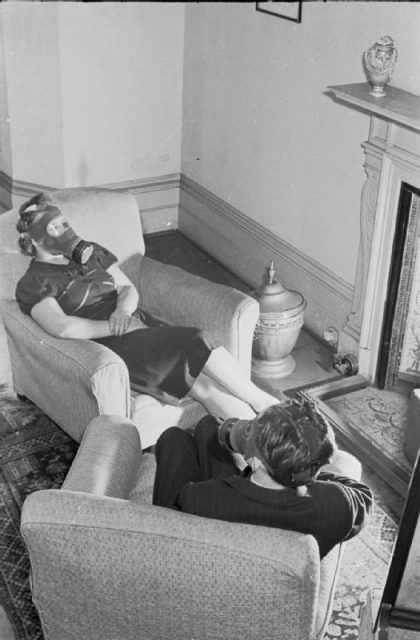
The First World War brought a number of new and potent technological innovations to the battlefield: tanks were deployed for the first time during this war, and aerial warfare was introduced.
Another, more sinister method of warfare also came to the fore, however, one that induced terror in soldiers and civilians alike: the use of poisonous gases like chlorine gas, mustard gas, and phosgene as weapons.
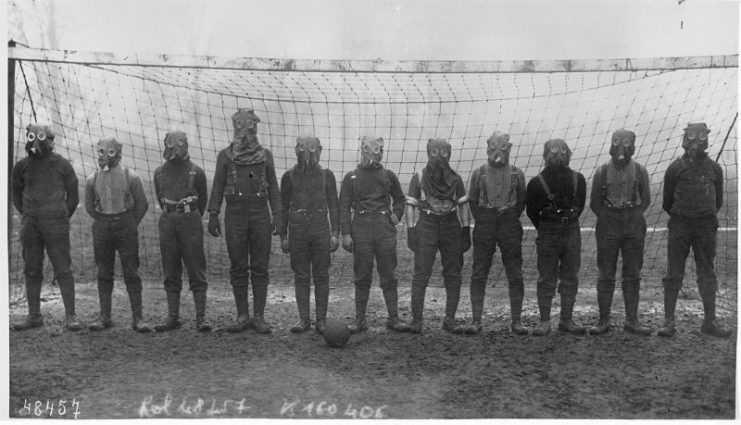
After witnessing the horrific and devastating effects of gas attacks on troops, which killed around ninety thousand men in an exceptionally cruel and brutal manner, the Geneva Protocol, adopted by the League of Nations, bans the use of poisonous gases in warfare.
What the Geneva Protocol did not ban, however, was the continued production and stockpiling of these lethal gases. So, while promising not to use them either on soldiers or civilians, many nations nonetheless continued to develop and stockpile stores of these gases.
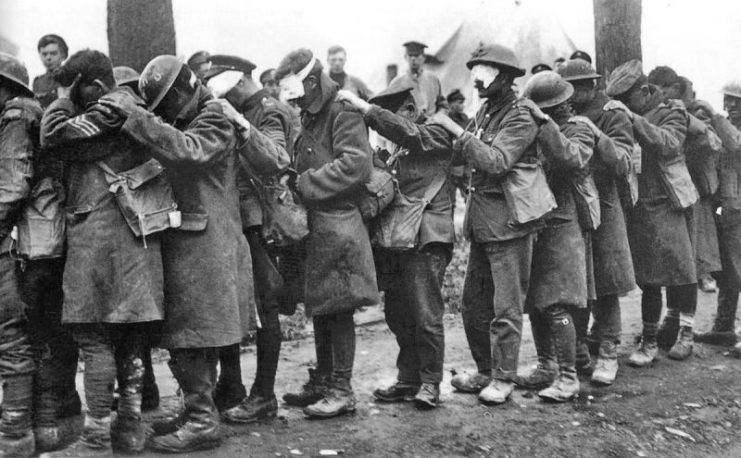
Thus, when WWII broke out in 1939, given Germany’s history of using such gases and the threat of the Nazis invading Britain, the British government was worried that Hitler might deploy these chemicals weapons against their civilians. They decided to take preemptive measures against the threat of such an attack, and thus the British civilian gas mask was developed.
Development of the civilian gas mask began in the late 1930s, and every British civilian was issued one – including children. The children’s version of the adult mask, the Small Child’s Respirator, was nicknamed the “Mickey Mouse” mask.
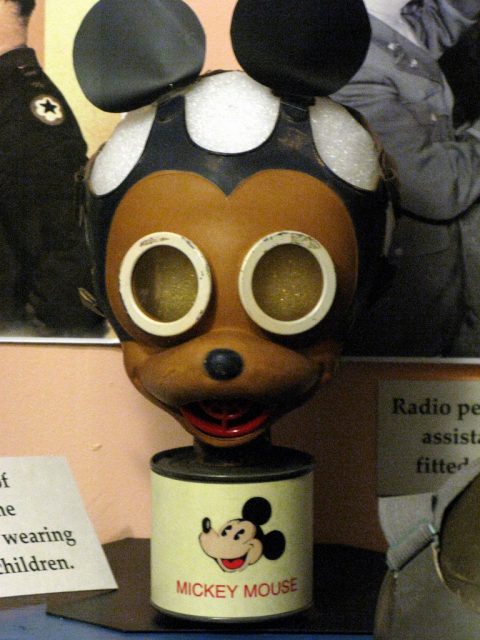
While the masks were effective in terms of being able to filter out poisonous gases like mustard gas, phosgene or chlorine gas, the filters in them contained a chemical that we now know is extremely harmful to humans: asbestos.
Asbestos, which was widely used as a heat-resistant insulator, in its “white” (chrysotile), “brown” (amosite) and “blue” (crocidolite) forms, saw widespread use throughout the earlier part of the twentieth century before it was discovered just how harmful prolonged exposure was. It causes asbestosis, pleuritis, and lung cancer, as well as a number of other lethal and incurable diseases.
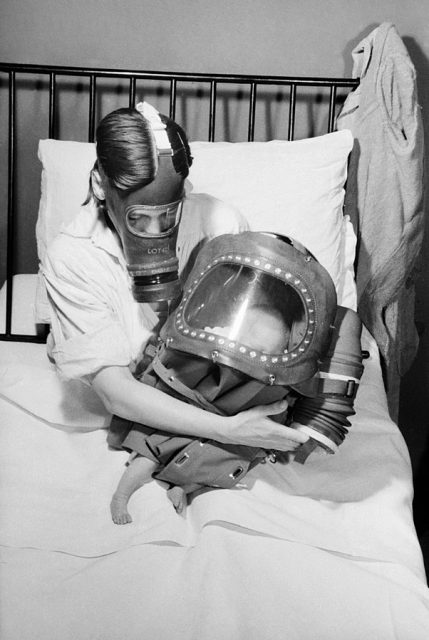
All of the British civilian gas masks, including those designed to be used by children, were equipped with filters that were at least twenty percent asbestos, either in its blue or white form. The blue form is especially dangerous – indeed, it is around one hundred times more dangerous than the white form.
The masks were extremely basic in design, and this was because they had to be, to be mass produced quickly enough to have one available for every British civilian. The first versions were so rudimentary in design that they didn’t even have a valve for exhaling. Later designs, however, added an exhale valve. Some of the later designs added a pre-filter, which contained yet another chemical lethal to human beings: arsenic.
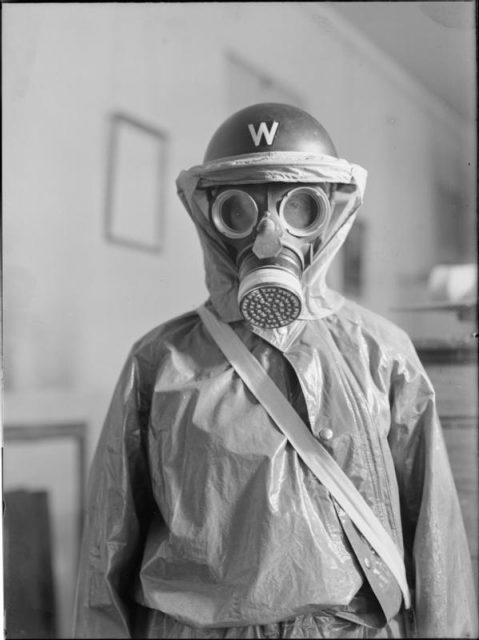
Every British civilian was required to have their gas mask with them or within close reach at all times, and this included women and children. In fact, many women had special handbags that had an extra pouch for their gas mask. Extensive propaganda campaigns were conducted, ensuring that all citizens were up to date and informed about how and when to use their gas masks.
Thankfully, Germany never launched a gas attack on their enemies (although they did, unfortunately, use lethally poisonous gases in their notorious concentration camps), so most of the British civilian gas masks went unused throughout the war. Many of them ended up being disposed of, and others were cut up by children, who used the rubber elastics to make slingshots.
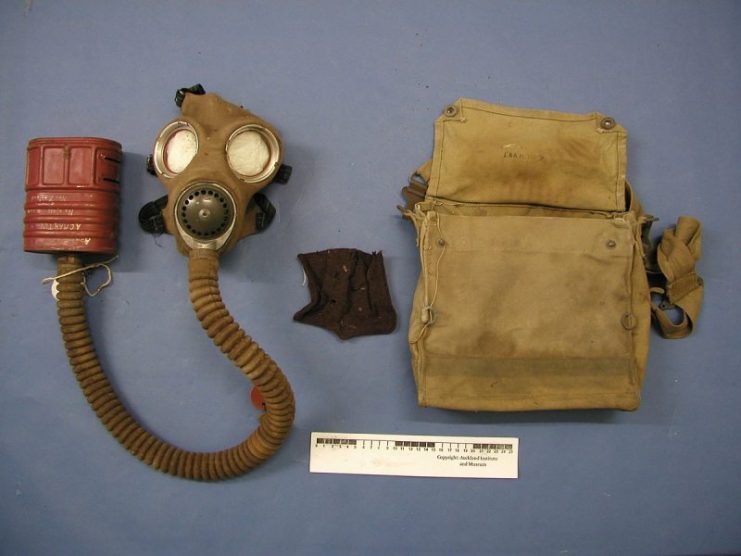
Auckland War Memorial Museum CC BY SA 4.0
Many, however, have survived intact, and can be obtained quite easily on the second hand market from a number of sources. Extreme care must be taken when handling these masks, especially the ones with the added arsenic pre-filter. In fact, it is recommended that should you handle one of these, you should wear a modern respirator – a gas mask is needed to handle a gas mask!
Read another story from us: 7 Innovative Explosives from Britain’s Eccentric WW2 Experts
It is further recommended that, for the collector, the British civilian gas mask should always be displayed in a closed, airtight display container. Also, if you are worried about the possibility of encountering a poisonous gas, don’t ever use a vintage or antique gas mask like these! Make sure you buy a modern respirator to protect your lungs.
